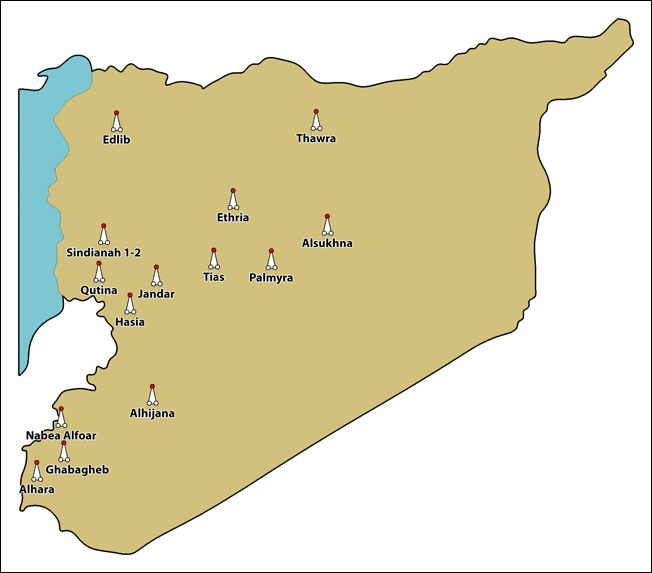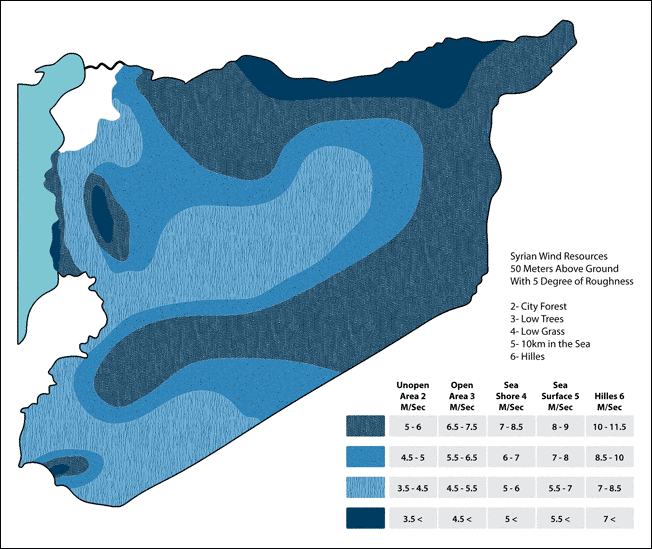Wind
Principle & How it works
Wind energy is considered to be a form of solar energy because the sun’s heat on different surfaces of the earth causes pressure differences. Those pressure differences cause masses of air to move and those movements are winds.The wind turbine is a device that captures and converts the kinetic energy of the wind into mechanical energy which is in turn is converted by a generator into electrical energy. The generation of electricity is the principal application of wind power today even though historically it been used directly to propel sailing ships or converted into mechanical energy for pumping water or grinding grain. Large-scale wind farms are typically connected to the local electric power transmission network, with smaller turbines being used to provide electricity to isolated locations.
Advantages
Wind energy as a power source is favored by many environmentalists as an alternative to fossil fuels, as it is plentiful, renewable, widely distributed, clean, and produces no greenhouse gas emissions. Its most important advantage is that it has reached a mature stage as a technology.Disadvantages
- The construction of wind farms is not universally welcomed due to their visual impact and other effects on the environment such as on birds and bats.
- Noise is sometimes an issue.
- As with most renewable energy solutions, their high capital cost is sometimes a deterrent.
- The stability of the energy produced
is similar to solar energy due to climate
effects. A study in Denmark showed that a
national grid should not compromise more than a
20 % component of wind energy due to its
instability.
Where it's working (Syria, Abroad)
The modern wind power industry began in 1979 with the production of wind turbines by Danish manufacturers Kuriant, Vestas, Nordtank, and Bonus. These early turbines were small by today's standards, with capacities of 20 to 30 kW each. Since then, they have increased greatly in size, while wind turbine production has expanded to many countries all over the world. There are now many thousands of wind turbines operating, with a total capacity of 73,904 MW of which wind power in Europe accounted for 65 % in 2006. Wind power is the fastest growing energy source and world wind generation capacity more than quadrupled between 2000 and 2006 with 81 % of wind power installations are in the US and Europe. In 2007, the countries with the highest total wind turbines installed capacity were Germany, the United States, Spain, India, and China.Over the few last years, wind energy has been used in several areas of the country for the sole purpose of pumping water. There are about 4000 wind turbines in Kalamon, Homs and other areas of the region. All of these turbines are used for water pumping and range 3-5m in diameter and 10-15m in height.
Wind energy for electrical purposes is extremely rare and the only publically known installation in Syria is one 150Kw turbine at Quineitra which is connected to the grid. There are some small locally manufactured turbines available in the market.
Future Development & integration
By 2010, the World Wind Energy Association expects 160GW of capacity to be installed worldwide, up from 73.9 GW at the end of 2006, implying an anticipated net growth rate of more than 21 % per year. The major technology developments enabling wind power commercialization have already been made. There is, of course, room for refinements and improvements in the turbines themselves. There also opportunities for new storage methods. One such method is the Compressed Air Energy Storage method where off-peak energy in the form of compressed air is buried underground and later release when demand increases.Local Factors & Conditions
The success of a wind turbine depends on a site’s wind speeds. Those wind speeds are higher with increasing height. Several studies have been prepared for the potential of exploiting wind energy in Syria. These studies show extremely good possibilities for Syria.The following map shows the locations of 14 metrological stations that have been setup around the country to survey the most suitable areas for the installation of wind turbines.

A study for the Ministry of Electricity concluded that the potential wind energy in Syria is about 85,000 MW. Because of practical conditions, however, only 2,500 MW is available for exploitation. This is still a relatively high capacity especially if it is compared with the 7,000 MW total nominal installed capacity of the Syrian electrical grid.
There are several areas in Syria which have a relatively good mean wind speed , these are illustrated on the following map:

The following table, published by the National Energy Research Centre, Syria, illustrates the mean wind speed recorded at the installed metrological stations for two years in some promising locations in the country:
| Area | Site Name | Annual wind speed | |
| Average [m/s] | Max [m/s] | ||
| Quneitra | Nabe Alfoar | 6.2 | 23.87 |
| Daraa | Ghabagheb | 6.6 | 23.7 |
| Alhara | 7.6 | 22 | |
| Homs | Sindianah | 8 | 23.3 |
| Jandar | 7.7 | 23.29 | |
| Hasia | 6.1 | 24.67 | |
| Qutina | 7.8 | 24.03 | |
| Ethria | 6.2 | 24.57 | |
| Tias | 5.08 | 22.78 | |
| Palmyra | 6.18 | 22.63 | |
| Alsukhna | 7.18 | 24.22 | |
| Damascus Suburb | Alhijana | 6.7 | 25.14 |
| Edlib | Edlib | 6.28 | 21.48 |
| Raqaa | Thawra | 6.3 | 19.91 |




